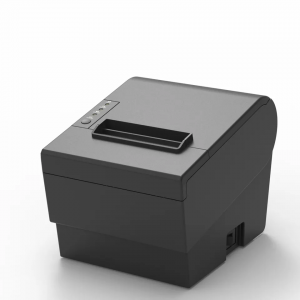When it comes to label printing, having a reliable WiFi connection is essential for a seamless print process. WiFi-enabled thermal label printers are becoming increasingly popular for their convenience and flexibility.
1.The Role of WiFi Connectivity in Thermal Label Printers
1.1Basic principles of WiFi connectivity
WiFi connectivity is a radio wave based communication technology that enables devices to transfer data over a wireless network. A router acts as the hub of the network, distributing the Internet connection to multiple devices via wireless signals.The core of WiFi connectivity involves the following aspects:
Signal transmission: radio waves in the 2.4GHz or 5GHz band are used for data transmission.
Encryption and authentication: protocols such as WPA2 and WPA3 are used to ensure the security of data transmission.
Connection Management: The router manages the connection of the device and assigns IP addresses to ensure stable data transmission.
2.How Thermal Label Printers Work via WiFi Connection?
The thermal label printer searches and connects to the specified wireless network through the built-in WiFi module. Users can connect by entering the network name and password through the printer panel or the accompanying software. When connected to WiFi, the printer receives print commands from a computer, smartphone or other networked device. Data transfer occurs via wireless signals without the need for a physical connection. Once the printer receives a print command, the internal processor parses the data and converts it into a printable format. Using thermal printing technology, an image or text is generated directly on the label paper stock by heating a specific spot on the print head. The printer provides feedback to the sending device via a WiFi connection on print status, such as print complete, out of paper, or malfunction. Users can monitor and manage print jobs in real time to increase productivity.WiFi connectivity provides thermal label printers with the flexibility and convenience to seamlessly collaborate with a variety of devices on the network, bringing users a more efficient printing experience.
If you have any interest or query during the selection or use of any barcode scanner, please Click the link below send your inquiry to our official mail (admin@minj.cn) directly! MINJCODE is committed to the research and development of barcode scanner technology and application equipment, our company has 14 years of industry experience in the professional fields, and has been highly recognized by the majority of customers!
2.How to Improve WiFi Connection Reliability for Thermal Label Printers
2.1 Location Optimization
Central location: place the router in the center of the office space to ensure that the signal covers all areas evenly. Printers should be placed as close to the router as possible to minimize signal attenuation.
Open area: Avoid placing the router and label tag printer in closed cabinets or corners; choosing an open area helps signal transmission.
Strategies for avoiding signal blockage
Stay away from obstacles: Keep the router and printer away from thick walls, metal objects and large pieces of furniture that can block or reflect WiFi signals.
Moderate height: Place the router and printer at a moderate height, such as on a desktop or high shelf, to avoid ground interference with signal propagation.
2.2 Network settings optimization
5GHz band: suitable for short distance and high speed transmission. Reduce interference, suitable for environments with more network devices. However, the penetration is weak and not suitable for use through walls.
2.4GHz band: strong penetration, suitable for covering larger areas. However, there may be more interference, suitable for environments where fewer devices are connected.
Setting Network Priority and QoS (Quality of Service)
Network Priority: In the router settings, set a higher network priority for important devices (e.g. printers) to ensure that they receive stable bandwidth.
2.3 Regular Maintenance and Updates
Regularly check and update router and printer firmware
Firmware update: Regularly check and update the firmware of your router and printer to fix known bugs and optimize performance. Most brands offer an automatic update feature that can be turned on to ensure the device is always running the latest version.
Configuration check: Check the network configuration of your router and printer regularly to ensure that the settings are correct and that misconfigurations are fixed in a timely manner.
Troubleshooting network connectivity issues
Monitor network status: Use the network monitoring tool to regularly check the status of your WiFi network to identify and resolve potential problems in a timely manner.
Reboot devices: When the network connection is unstable, rebooting routers and printers can clear the cache and solve temporary problems.
Technical support: When encountering network problems that cannot be resolved, contact professional technical support or the device manufacturer for assistance.
In conclusion, the reliability of a label wifi printer's WiFi connection is a key factor in ensuring smooth and efficient printing operations. Users can minimise the risk of connectivity issues by optimising their WiFi settings by considering factors such as WiFi network quality, printer location and active monitoring. This ensures stable communication between the printer and the network, providing a reliable printing experience.
If you have any questions about how to choose the right thermal printer for your needs, please feel free to contact us.
Phone: +86 07523251993
E-mail: admin@minj.cn
Official website: https://www.minjcode.com/
If You Are in Business, You May Like
Recommend Reading
Post time: Jul-05-2024




